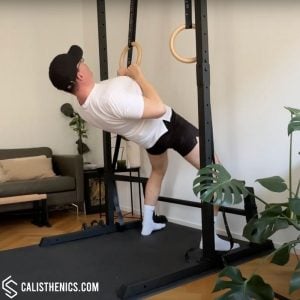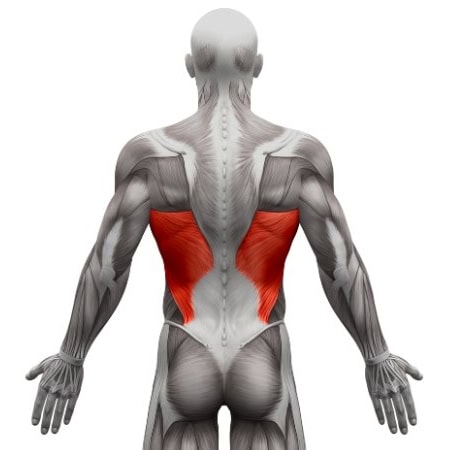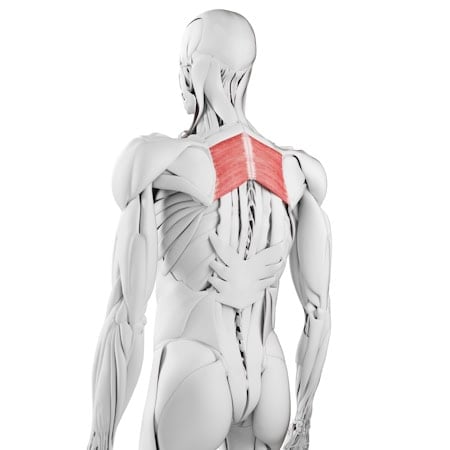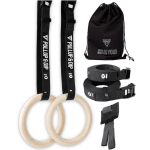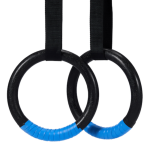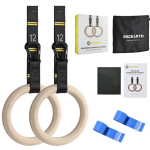Narrow Grip Ring Row
How to do Narrow Grip Ring Row?
The narrow grip ring row is a calisthenics pulling exercise that primarily targets the upper back, biceps, and forearms while engaging the core. This variation of the ring row emphasizes the arms and mid-back by using a closer hand position, making it a great alternative to traditional pull-ups for those looking to build pulling strength with a lower resistance level. The adjustable nature of gymnastic rings allows you to modify the difficulty by changing the angle of your body.
Before attempting this exercise, you should have basic pulling strength and core control. Being able to hold a plank with good form and perform at least 10 standard incline rows (e.g., using a bar or rings at chest height) will help ensure you have the stability and control needed for this movement. Mobility in the shoulders, wrists, and elbows is beneficial to maintain proper technique and reduce strain on the joints.
You’ll need a pair of gymnastic rings or TRX straps, anchored securely at an appropriate height. While no additional equipment is necessary, a resistance band can be used to assist beginners, and weighted vests or ankle weights can add intensity for advanced athletes. The rings should be adjusted so that they hang at a height that allows you to perform the movement with a full range of motion.
How to Perform the Narrow Grip Ring Row
1. Setup
• Adjust the rings to a height that allows you to perform the exercise at the desired difficulty level. The lower the rings, the harder the movement will be.
• Stand facing the rings and grip them with a neutral grip (palms facing each other), keeping your hands close together, around shoulder-width or slightly narrower.
2. Body Positioning
• Walk your feet forward and lean back, keeping your body in a straight line from head to heels. The steeper the angle, the easier the exercise; a more horizontal position increases difficulty.
• Engage your core and glutes to prevent sagging or arching in the lower back.
3. Pulling Phase
• Initiate the movement by pulling your chest toward the rings, leading with your elbows and keeping them close to your body (not flaring out).
• Focus on squeezing your shoulder blades together at the top of the movement while maintaining a tight core.
• Your hands should reach just below your chest at the peak of the pull.
4. Lowering Phase
• Slowly extend your arms and lower yourself in a controlled manner, maintaining a straight body position.
• Avoid dropping too quickly—control is key for muscle activation and injury prevention.
• Fully extend your arms at the bottom before starting the next rep.
Benefits of the Narrow Grip Ring Row
• Strengthens the upper back and arms – The narrow grip shifts more emphasis to the biceps and mid-back, making it a great precursor to pull-ups.
• Enhances core stability – Maintaining a straight body throughout the movement requires core engagement, improving overall body control.
• Reduces joint stress – The free movement of gymnastic rings allows for natural wrist and elbow positioning, reducing strain on the joints compared to fixed bars.
• Improves posture and scapular control – Strengthening the back muscles helps counteract poor posture caused by excessive sitting and forward-leaning activities.
• Highly adjustable – The difficulty can be modified easily by adjusting the ring height and foot positioning.
Common Mistakes to Avoid
• Flaring the elbows – Keep your elbows close to your body to prevent unnecessary shoulder strain.
• Letting the hips sag – Maintain core engagement to keep your body in a straight line.
• Rushing the movement – Perform each rep slowly and with control to maximize muscle engagement.
• Using momentum – Avoid swinging or jerking; the movement should be smooth and deliberate.
• Not achieving full range of motion – Ensure you pull all the way to your chest and fully extend your arms at the bottom.
Gym Equivalent Exercises
• Lat Pulldown (Close-Grip) – Mimics the pulling motion with a vertical plane instead of horizontal.
• Seated Cable Row (Close-Grip) – Targets the same muscle groups while keeping the elbows close.
• Dumbbell or Barbell Bent-Over Row – A free-weight alternative that emphasizes similar pulling mechanics.
Tips for the proper execution of Narrow Grip Ring Row
Keep your wrists straight and aligned with your forearms to avoid discomfort.
Experiment with different angles to find the right difficulty level for your strength.
Use a slight pause at the top of the movement to increase time under tension.
Engage your legs and glutes to help maintain a straight body position.
Breathe in as you lower, and exhale as you pull yourself up.
If you experience wrist discomfort, slightly rotate the rings as you pull to find a more natural position.
Muscles worked when doing Narrow Grip Ring Row
During the narrow grip ring row, your back and arms do most of the pulling, while your core stabilizes your body.
Primary muscles:
•Latissimus dorsi (lats) – Engaged during the pull, especially as you bring your body up.
•Biceps brachii – Activated due to the narrow grip, increasing arm involvement.
•Rhomboids and trapezius – Help retract the shoulder blades at the top of the movement.
Secondary muscles:
•Core muscles (rectus abdominis, obliques, transverse abdominis) – Work to maintain a straight body position.
•Rear deltoids – Assist in shoulder retraction and stability.
•Forearms – Grip strength is required to hold onto the rings.
Primary Muscle(s):
Secondary Muscle(s):
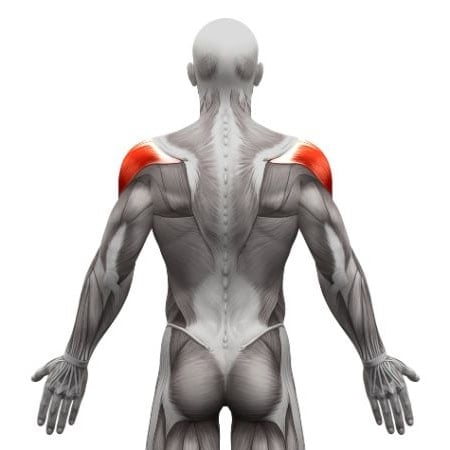
Rear delt
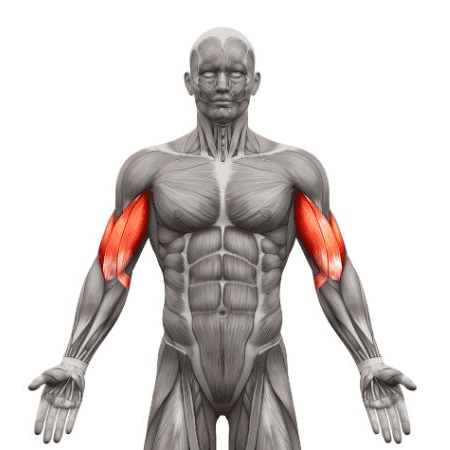
Biceps
Adjust the difficulty of Narrow Grip Ring Row
The narrow grip ring row is highly scalable, making it an excellent choice for all fitness levels. Beginners can use a higher ring setup or assistance methods to build pulling strength gradually. On the other hand, advanced athletes can add resistance or manipulate tempo to increase intensity. By simply adjusting your body angle, grip, or the equipment setup, you can tailor this exercise to suit your personal strength goals and progressively overload your muscles for continued improvement.
How to make Narrow Grip Ring Row harder?
How to make Narrow Grip Ring Row easier?
How to make Narrow Grip Ring Row harder?
To make Narrow Grip Ring Row harder:
-
Lower the rings so that your body is more horizontal, increasing resistance.
-
Elevate your feet on a box or bench, making the movement more challenging.
-
Add weight by wearing a weighted vest or placing a plate on your chest.
-
Perform slow negatives by lowering yourself over 3-5 seconds for increased muscle engagement.
-
Try ring false grip rows to challenge your forearm and grip strength.
How to make Narrow Grip Ring Row easier?
To make Narrow Grip Ring Row easier:
-
Perform the movement with the rings set higher, reducing the incline and making the pull easier.
-
Bend your knees and place your feet flat on the ground to decrease the load on your upper body.
-
Use a resistance band looped around the rings and under your back for assistance.
-
Start with eccentric reps (lowering slowly) before progressing to full reps.

